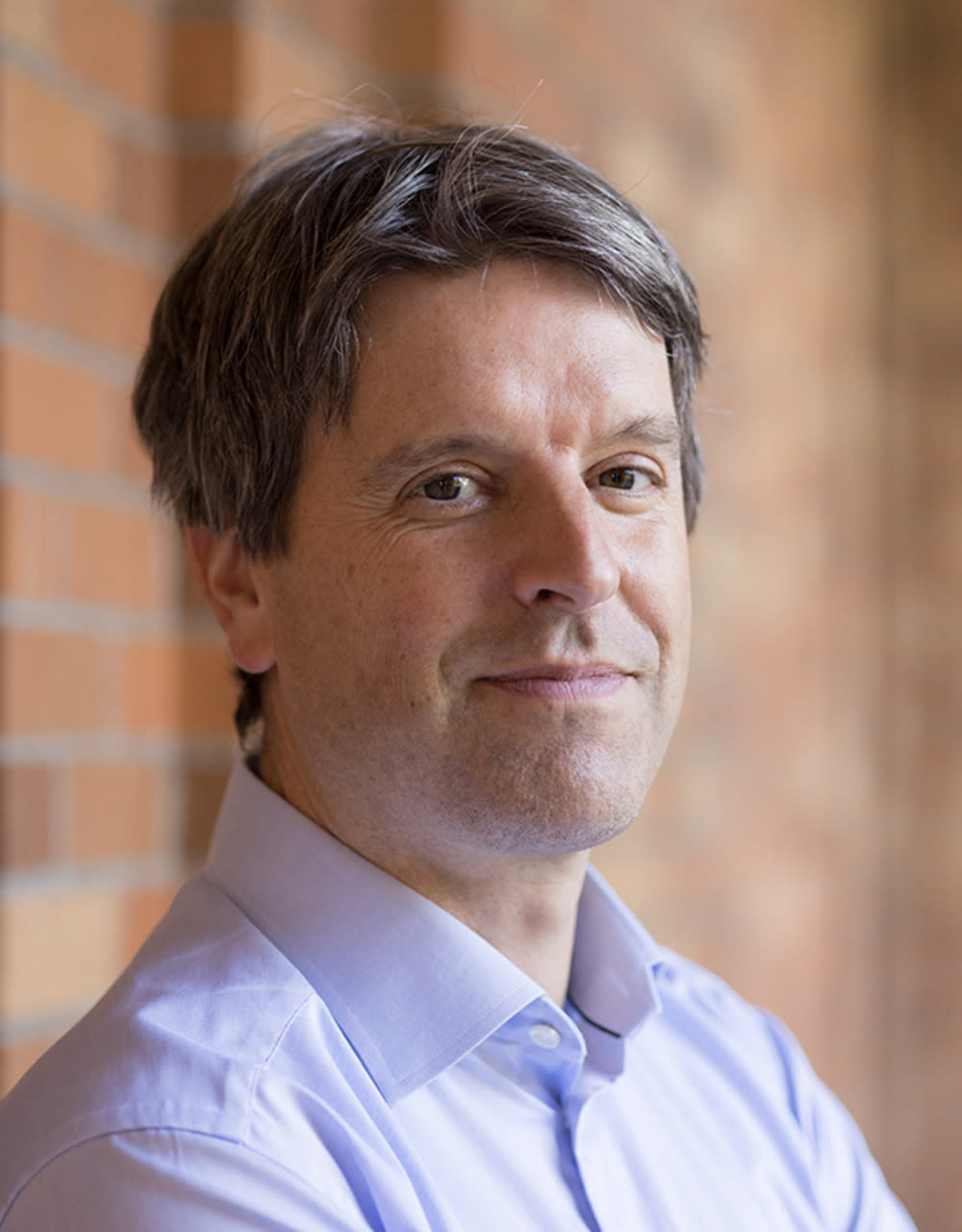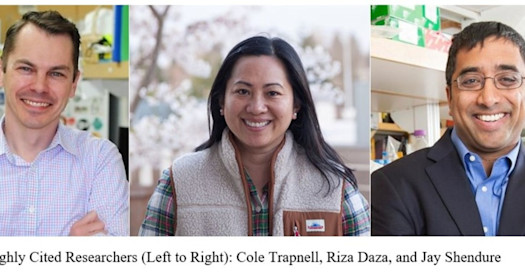
Editor's note: Here is the article published by the UW Allen School and Department of Electrical & Computer Engineering announcing Dr. Selig's award.
A little more than two decades ago, University of Washington professor Georg Seelig began planting the seeds of a career in theoretical physics, seeking elegant solutions to the mysteries of the natural world.
Last month, Seelig, a faculty member in the Allen School and Department of Electrical & Computer Engineering, was hailed as the “DNA Computer Scientist of the Year” by the International Society for Nanoscale Science, Computation and Engineering (ISNSCE), who named him the winner of the 2023 Rozenberg Tulip Award in recognition of his leadership and original contributions that have advanced the field of DNA computing.
“It’s wonderful to get this recognition from my community,” Seelig said. “The field has grown quite a bit since the beginning but remains very collaborative and collegial.”
Seelig’s work with DNA strand displacement, scalable DNA data storage and retrieval, and technologies for single-cell sequencing and analysis of gene regulation has helped push the frontiers of molecular programming. For instance, he pioneered adapting strand displacement technology to living cells. Prior to his work, inputs to the circuits were synthesized chemically and not produced inside a cellular environment.
“This brings up a whole range of different challenges because the interior of cells is an infinitely more complex environment than a test tube with a bit of salt water,” Seelig said. “Cells are full of proteins that destroy foreign DNA and other molecules that sequester it in different subcellular compartments.”
Now a leader in the field, Seelig said a turning point for him came early on in his academic journey. Before his internship at Bell Laboratories, he had trained as a theoretical physicist. He didn’t think of himself as a practitioner.
But his perspective changed after meeting Bernard Yurke, a physicist at Bell who was building a synthetic molecular motor that could revolutionize the field. Dubbed “molecular tweezers” for its pincer-like mimicry, the motor could be switched between an open and a closed configuration by adding two more synthetic DNA strands.
The work struck Seelig with its simplicity — with just a few tweaks, scientists could, quite literally, bend the building blocks of life to their liking.
“The idea seemed both almost trivial,” he said, “and incredibly brilliant.”
That brilliance has followed him throughout his career. Since joining the UW faculty of the Allen School and the UW Department of Electrical & Computer Engineering in 2008, Seelig has continued to make the magical actual and sleight of hand scientific.
Seelig remembers how he grew after his experience at Bell Labs. After completing his doctorate at the University of Geneva, the Swiss scientist dove further into experimental work as a postdoc at the California Institute of Technology. There, he and Yurke joined MacArthur Fellow Erik Winfree’s lab, collaborating with some of the brightest minds in molecular engineering. Like Yurke before him, Winfree, a leading researcher in the field, mentored Seelig and fostered his potential.
“It wasn’t long after he joined my lab that I began to think of him as a rock star of science,” Winfree said. “Sometimes more Serge Gainsberg, sometimes more Richard Ashcroft, sometimes more John Prine, but always undeniably Georg Seelig.”
Together with David Soloveichik, a graduate student in the lab at the time, and David Yu Zhang, then an undergraduate, Seelig invented DNA strand displacement circuits, which allowed scientists to control the forces behind synthetic DNA devices. Being able to program the foundations of existence, to maneuver its scaffolding to one’s will, brought with it new questions besides tantalizing possibilities.
What if these reactions could target cancer cells via smart therapeutics? Could the reactions be sped up or slowed down? In DNA’s twists and turns, can the plot of a human life change for the better?
“It was a remarkably creative interaction, blending motivation from biophysics, biotechnology, theoretical computer science, the origin of life, electrical engineering, chemistry and molecular biology, and it resulted in several papers that had an enormous impact on the field,” Winfree said. “Georg’s vision, leadership, perseverance and exquisite experimental skills made the magic real and undeniable.”
The challenge of making “magic” feeds his curiosity, which Winfree likened to an artist’s muse. As head of the Seelig Lab for Synthetic Biology and a member of the Molecular Information Systems Laboratory, Seelig has now become a mentor himself, teaching the next generation of scientists to keep hunting for answers among the helices.
“When he picks up the tune of a beautiful idea, he is unstoppable in crafting it into a compelling song,” Winfree said. “It’s been great how, after coming to UW, he has released album after album of hits.”
Those first “hits” were scrawled across whiteboards at Caltech. Seelig remembers poring over them with his collaborators, searching for that elegant solution, for theory to materialize into practice.
To the group’s surprise, their effort paid off more quickly than expected. For Seelig, it foreshadowed things to come.
“Shortly afterwards, we tested the idea experimentally,” Seelig said of inventing DNA strand displacement circuits. “It worked on the first try.”


